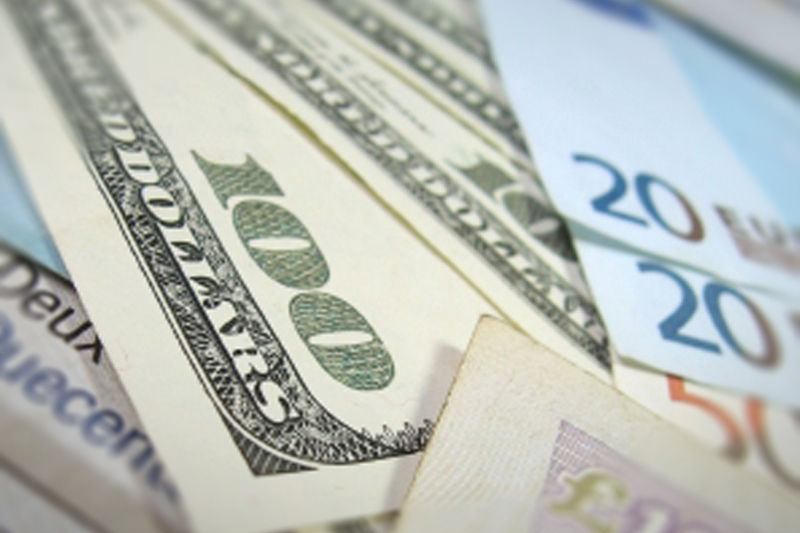Investing.com -- EUR/USD ticked up on Tuesday remaining at near one-month highs, amid an increasing likelihood that the Federal Reserve could delay its first interest rate hike of the year after the International Monetary Fund lowered its global economic growth forecasts for 2016.
The currency pair wavered between 1.0860 and 1.0938, before settling at 1.0911, up 0.0018 or 0.17% on the session. The euro has closed higher against the dollar in three of the last four sessions and four of the last six trading days. Since closing 2015 at 1.0860, the euro is relatively flat versus its American counterpart on the new year, up by less than 1%.
EUR/USD likely gained support at EUR/USD at 1.0538, the low from December 3 and was met with resistance at 1.1352, the high from Oct. 22.
On Tuesday, the International Monetary Fund to cut its global growth forecasts for 2016 by 20 basis points to 3.4%, marking the third time the agency has lowered its estimates over the last year. It came hours after China's National Bureau of Statistics said the national economy grew by 6.8% in the fourth quarter, down slightly from the previous quarter and the weakest since the first quarter of 2009. As a result, annual GDP in 2015 rose by 6.9%, significantly lower than growth of 7.3% a year earlier and the lowest amount in 25 years. The reading fell in line with analysts' expectations, as strong services and consumption data offset weak manufacturing and exports figures.
For nearly three decades, from 1989 until 2015, the Chinese economy grew nearly 10% a year, including an all-time high of 15.4% in 1993. The Chinese government set a target of 7% growth in 2015, as the economy continues a transition from a manufacturing-based, test economy to a consumer-based, service one.
Investors await a closely-watched interest rate decision by the European Central Bank on Thursday for further signals of divergence between central banks in the U.S. and the euro zone. The ECB, however, is largely expected to leave rates unchanged amid long-term concerns related to slowing growth in China and the impact of crashing oil prices on the global economy.
Next week the Federal Open Market Committee (FOMC) is also expected to hold its benchmark interest rate unchanged at its January meeting, its first since the U.S. central bank lifted rates for the first time since the Financial Crisis last month. On Tuesday, the CME Group's (O:CME) Fed Watch tool placed the probability of a rate hike next week at 8.4%.
The U.S. Dollar Index, which measures the strength of the greenback versus a basket of six other major currencies, hit an intraday low of 98.93 before closing at 99.17, down 0.08 on the session. Earlier on Tuesday, the index jumped to an intraday high of 99.40, its highest level in nearly two weeks. The dollar remains near a 12-month high from December, when the index eclipsed 100.00.
